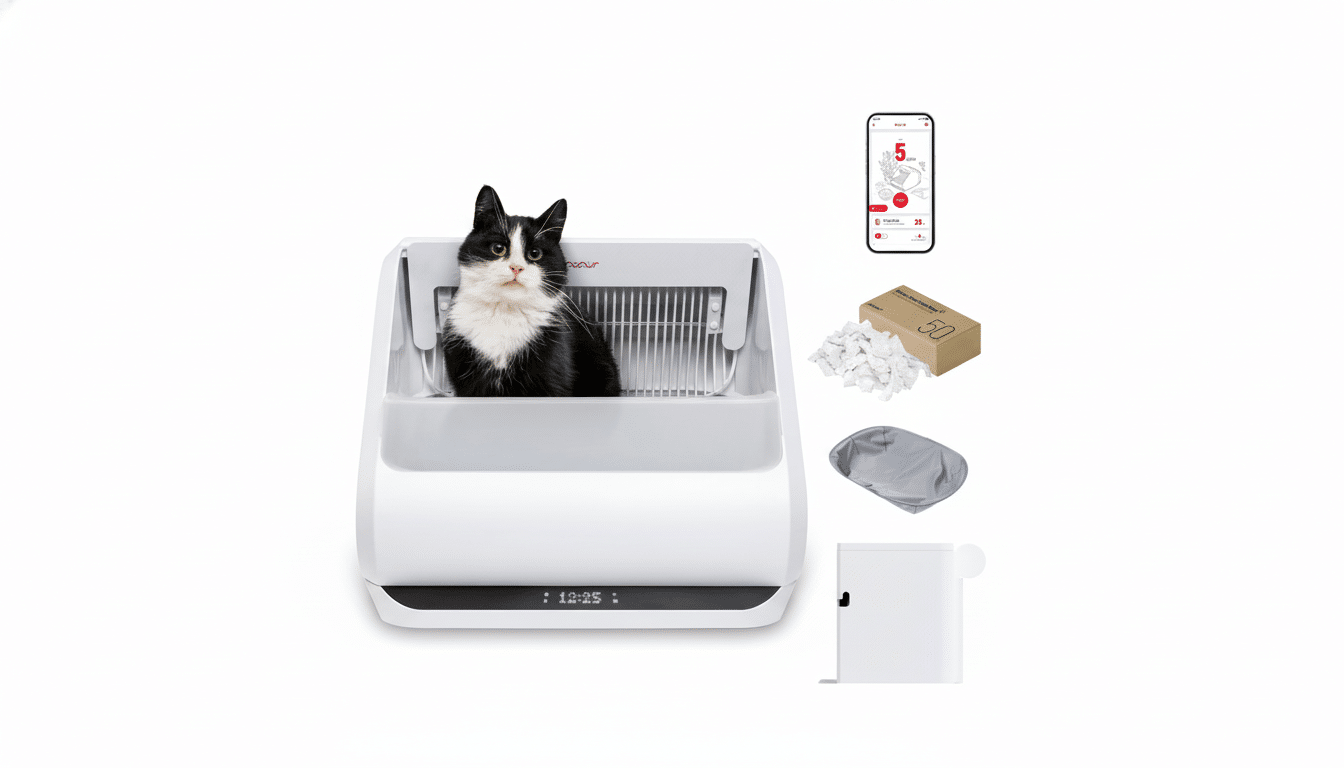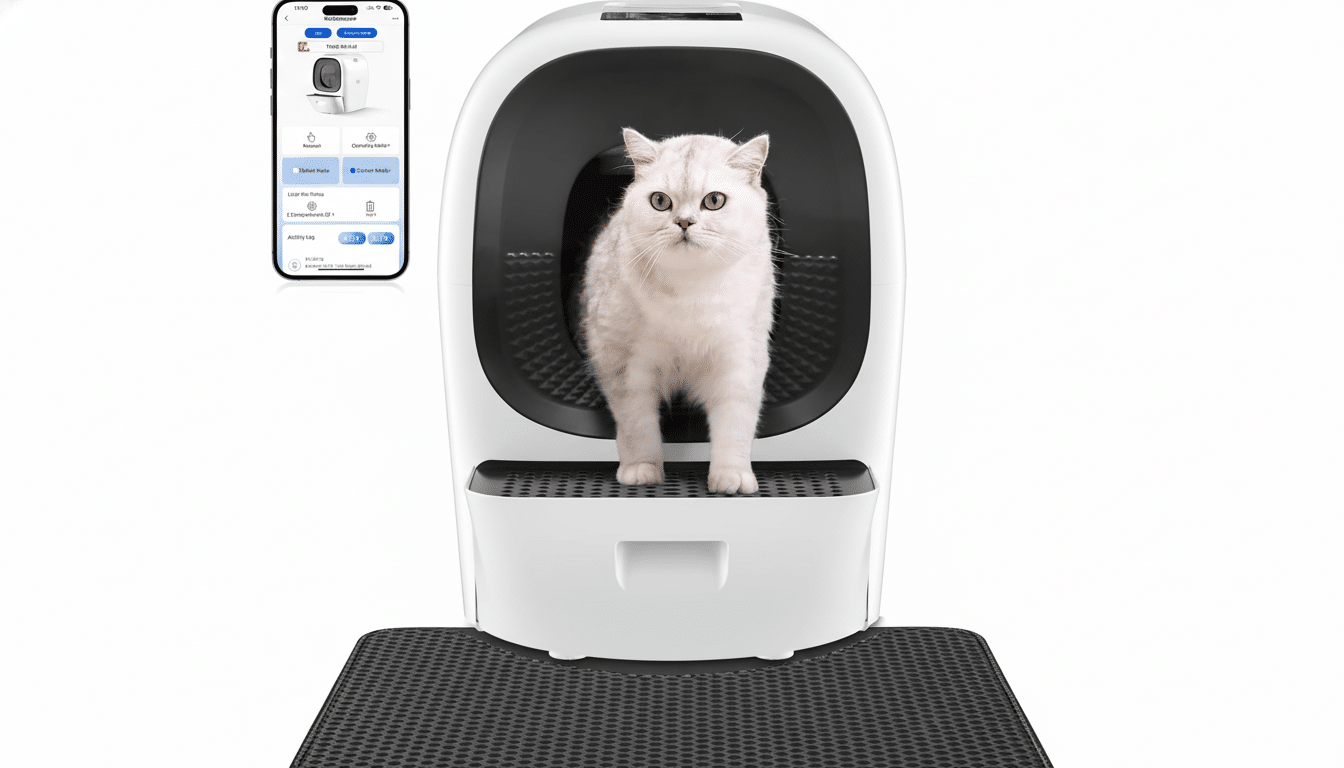That box is in the midst of a high-tech makeover, as a new wave of smart litter trays offer to keep an eye on Fluffy’s health and alert you to potential ailments long before you might have even scheduled that routine checkup.
Taking the clean-the-cat’s-litter-box hassle to new heights, this newest catware from Whisker focuses on automatic cleaning and AI-driven tracking “designed to convert bathroom behavior into tailored insights for pet parents or veterinarians.”

At the high end of the scale, the Litter-Robot 5 Pro comes with dual cameras — one on the outside to detect individual cats in a multi-cat home and another on the inside to analyze patterns in waste and usage. At the standard Litter-Robot 5, automated scooping saves you time, and waste distribution is better for odor control, but the Litter-Robot EVO covers single-cat households by taking a more budget-friendly approach to being compact and self-cleaning. An optional new RFID tag can even assist in telling apart lookalike felines.
What the AI sees when monitoring your cat’s litter box
The system cobbles together weight sensing, how long visits are, how frequently they occur and interval timing with image-based classification of what occurs in the tray. In practice, this means it can guess which cat used the box; how long it remained inside; whether its output is consistent with recent trends. The companion app does that over days and weeks, looking for patterns — there are more frequent trips to the bathroom with minimal output, longer-than-usual sessions or suddenly larger clumps — that frequently precede clinical symptoms.
Whisker’s new subscription, Whisker+, adds longitudinal analytics. Rather than gating off what currently exists behind a paywall, the company frames the service as an add-on for deeper insight: multi-week trend lines, custom alerts and comparative baselines based on each pet. The subscription costs $7.99 a month, or $79.90 for the year, the company said. On the hardware side, Litter-Robot 5 goes for $799, the camera-sporting Pro is $899, EVO $599 and RFID tag $29.
Why litter data matters for veterinarians
For cats, the litter box is a goldmine of biomarkers. Veterinary groups stress that changes in urination and defecation are some of the first, best signs something is wrong. According to the American Veterinary Medical Association, excessive thirst and urination can sometimes signal diabetes or kidney disease; straining but with little result may indicate a urinary obstruction — an emergency, especially in male cats.
Chronic kidney disease is very common in older cats; according to the Cornell Feline Health Center, about a third of senior kitties will get CKD. And lower urinary tract disease ranks among the most frequent of feline diagnoses at Banfield Pet Hospital. Documenting objective, time-stamped trends — how frequently a cat visits the box, how long he stays there and what relative size the clumps are — can help owners see when “normal” has slipped quietly into “concerning,” as well as give veterinarians a more data-rich history to work from.

Consider two common scenarios. In a home with multiple cats, tracking based on individuals helps ensure that data corresponding to the right cat will cause an alert. If a cat starts drinking and making produce-free little trips to the box (assuming you are not leaving beads in the box), this can kick off a vet call for potential cystitis. Conversely, a consistent pattern of increasing clump size and frequency might promote early screening for endocrine or renal diseases. The point is not any one read; it’s the trend.
Privacy, accuracy, and the system’s key limitations
There is no consumer device that supplants a physical exam or lab tests. AI can miss subtleties and occasionally misidentify activity, particularly in edge cases like very fine litter, poor lighting or nearly identical cats without tags. Keep in mind that alerts are a reason to see, but also to refer, not a diagnosis.
Data governance also matters. Video- and sensor-based health signals could seem intrusive to some families. Would-be buyers should look at how images are processed and stored, the resolution of any footage retained and how access by more than one person is managed. As with smart cameras and doorbells, the appropriate privacy settings — and a grasp of what is optional — can help you live more peaceably with the tech.
Where it fits in the smart pet market’s mix
“Smart” litter boxes are not a new concept, though the addition of computer vision and the ability to identify cats on a per-cat basis marks a shift from convenience features to instruments of preventive care. “If you have competing systems today, they overly rely on weight sensors,” said Scrivens, adding that by incorporating cameras, carriers only complicate things for themselves. Should the algorithms prove to work, it could push the category a step closer to a “continuous monitoring” approach that is already standard in human health wearables.
Key takeaways for cat owners considering smart litter
For multitasking households or the frequent traveler, a cat toilet that connects to this invisible early-warning radar is an essential time-saver. While the entry fee is steep, and the subscription perhaps optional rather than essential, the premise is convincing: fewer head-scratchers about who used what box that once, more specifics on what was changed — and when. (Note, as always: Any red-flag alerts such as those above should be followed by a call to your vet, who can analyze the data in context and determine next steps.)

